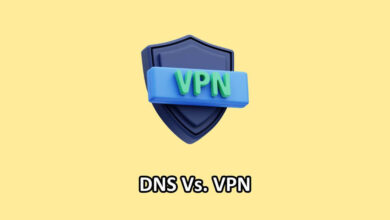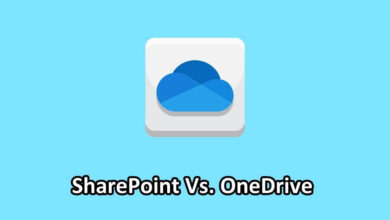Comparing Power BI Vs Tableau: A Comprehensive Guide [Chart]
Are you tired of manually sifting through data and struggling to extract insights? Look no further than Power BI and Tableau, two powerful business intelligence tools that can revolutionize the way you analyze data. But how do they stack up against each other? In this comprehensive guide, we’ll dive into the similarities and differences between Power BI and Tableau, so you can make an informed decision on which tool is right for your organization.
Power BI Vs Tableau (Comparison Chart)
| Power BI | Tableau |
|---|---|
| Power BI is an interactive data visualization software developed by Microsoft with a primary focus on business intelligence. | Tableau is a powerful and fastest-growing data visualization tool developed by Tableau Software and used in the Business Intelligence Industry. |
| Power BI uses a traditional ribbon-style interface, similar to Microsoft Office applications. | Tableau utilizes a modern drag-and-drop user interface, making it intuitive and user-friendly. |
| It offers extensive connectivity, enabling easy access to various data sources, including on-premises and cloud applications. | It provides more flexibility in connecting directly to data sources, but it may require more manual effort to set up connections. |
| It offers a range of visualization options, such as charts, gauges, and maps, allowing users to present data effectively. | It offers an even wider range of visualizations, including advanced options like geospatial mapping, enabling users to create highly interactive and visually appealing dashboards. |
| Power BI allows users to customize visuals with custom formats and colors, providing flexibility in presenting data. | Tableau provides built-in tools for creating custom visuals and offers the ability to create custom calculations using calculated fields, enhancing the level of customization. |
| Power BI focuses on quick data consumption and making informed decisions based on the available information. | Tableau emphasizes uncovering insights in data through advanced analysis capabilities, such as predictive analytics and machine learning algorithms, |
| It offers various pricing models, ranging from free options to enterprise-level plans, providing flexibility based on user needs. | It follows a subscription-based pricing model, where the cost is determined by the number of users and required features, ensuring scalability and tailored pricing options. |
What is Power BI?
Power BI is a cloud-based business intelligence and analytics platform from Microsoft. It provides users with interactive visualizations and dashboards that help them to analyze data and derive insights from their data. Power BI enables users to quickly create reports, dashboards, and visualizations of their data, allowing them to make better decisions.
Additionally, Power BI integrates with other Microsoft products, such as Office 365 and Dynamics 365, so users can more easily share their data and insights with colleagues. They can also connect to other data sources such as databases, spreadsheets, and web services.
What is Tableau?
Tableau is a powerful data visualization tool that helps users see and understand data. It can be used to create charts, graphs, and maps, and to find trends and patterns in data. Tableau is easy to use and can be used by people of all skill levels. It is developed by Tableau Software and is available for both desktop and web-based applications.
Moreover, Tableau has the ability to connect to a wide range of data sources, including relational databases, flat files, cloud-based services, and Hadoop. It also allows users to explore data in an interactive manner and create stunning visualizations that can be shared with colleagues.
Pros and Cons of Power BI
Pros of Power BI
- Power BI provides powerful insights into your data. It gives you the ability to quickly visualize and analyze your data in a number of ways with its drag-and-drop interface, allowing you to uncover trends and relationships that may have otherwise gone unnoticed.
- Power BI is extremely user-friendly and can be used by anyone, regardless of their level of technical expertise. Its intuitive design makes it easy for anyone to create visualizations from their data and collaborate on projects with others.
- It offers a range of features that make it ideal for businesses, such as real-time dashboards, predictive analytics, mobile app integration, and natural language processing capabilities.
- Power BI integrates easily with other Microsoft products including Excel, SharePoint, Office 365, Dynamics 365, and Azure. This allows businesses to quickly and easily transfer data across platforms, streamline processes, and gain valuable insights from their data in one convenient location.
Cons of Power BI
- Power BI can be difficult for new users to learn due to its complexity and the sheer number of features available.
- Power BI is only available on Windows operating systems, making it unsuitable for those using other platforms such as Mac or Linux.
- The cost of subscription plans can be expensive for larger businesses that need access to more advanced features such as predictive analytics or natural language processing capabilities.
Pros and Cons of Tableau
Pros of Tableau:
- Tableau is easy to use and it can help users to build visualizations quickly. The drag-and-drop feature makes the platform user-friendly.
- Tableau offers a wide range of data sources that can be used to create dynamic visuals. It also provides tools for data exploration, analysis, and visualization.
- It is highly scalable and can be used across various departments such as finance, marketing, operations, etc., to gain insights from data.
- Tableau has strong security features which help protect sensitive data from unauthorized access or manipulation.
- Tableau offers powerful analytics capabilities with its suite of algorithms and predictive models that enable users to find patterns in their data and make better decisions based on those findings.
Cons of Tableau:
- Tableau is a relatively expensive tool when compared to some other analytics software on the market today.
- Its built-in visualization options are limited in comparison to some other products on the market today and may not meet the specific needs of certain businesses or organizations requiring more customization options for their visualizations.
- Due to its complexity, there is a steep learning curve for new users which may take time before they become adept
Key Differences Between Power BI and Tableau
- User Interface: Power BI has a traditional ribbon-style interface for accessing features. On the other hand, Tableau uses a more modern drag-and-drop user interface.
- Customization Options: Power BI allows users to customize their visuals with custom formats and colors. Tableau, on the other hand, has built-in tools for creating custom visuals, as well as the ability to create custom calculations with calculated fields.
- Data Analysis Capabilities: Power BI is designed for quickly consuming data and making decisions based on that information. On the contrary, Tableau is designed for uncovering insights into data through more complex analysis capabilities such as predictive analytics and machine learning algorithms.
- Pricing Model: Power BI is offered in several pricing models, ranging from free up to enterprise-level plans. Tableau offers a subscription-based pricing model based on the number of users and features needed.
Power BI Vs Tableau : Features Comparison
– Dashboard and Reports: Power BI provides an intuitive dashboard and report builder with additional visualizations, including animated visuals and 3D maps. Tableau also offers powerful visualization capabilities but lacks the ability to animate data or display 3D maps.
– Data Connectivity: Power BI supports a wide range of data sources, including on-premises sources such as SQL Server and Oracle, cloud storage services like Dropbox and OneDrive, web services like Twitter and Salesforce, and streaming services like Microsoft Azure Stream Analytics. Tableau supports many of the same sources as well as Google BigQuery for advanced analytics.
– Data Visualization & Analytics: Both Power BI and Tableau offer advanced data visualization capabilities, such as interactive charts, graphs, and tables. Additionally, Power BI also offers a variety of pre-built templates that can be used to quickly create dashboards without any coding.
– Security & Sharing: Both Power BI and Tableau offer secure sharing options for dashboards and reports. Power BI provides granular user-based security with role-based access control. On the contrary, Tableau allows for the secure sharing of data without the need for separate user accounts. Additionally, both platforms provide enhanced security features such as encryption and single sign-on capabilities.
How to Choose the Right Solution for Your Business Needs?
There is no single right solution for every business need, so choosing the right solution depends on many factors. Some important considerations include:
– The specific needs of your business
– The size and complexity of your data
– Your budget
– The skills of your team
Both Power BI and Tableau offer robust solutions for business intelligence and analytics. To decide which solution is right for your organization, begin by evaluating the data you need to analyze and the type of analysis you need to do. Then consider the cost, user experience, scalability, and support offered by each platform. Finally, assess your team’s skillset to ensure they can effectively utilize the chosen solution.
Similarities Between Power BI and Tableau
- Both Power BI and Tableau are data visualization tools that allow users to create interactive, informative charts and graphs.
- Both tools have some similar features, including the ability to connect to a variety of data sources, create custom visuals, and share dashboards.
Conclusion
Comparing Power BI vs Tableau can be a daunting task, especially with the many features and considerations to weigh in. In this guide, we have discussed the basics of both tools along with their key differences that you should consider when making your decision.
Ultimately, it comes down to what is best for you or your organization’s needs so make sure to take into account all of the pros and cons before choosing one over the other. We hope that this comprehensive guide has helped you understand each platform better and made navigating through them easier.



